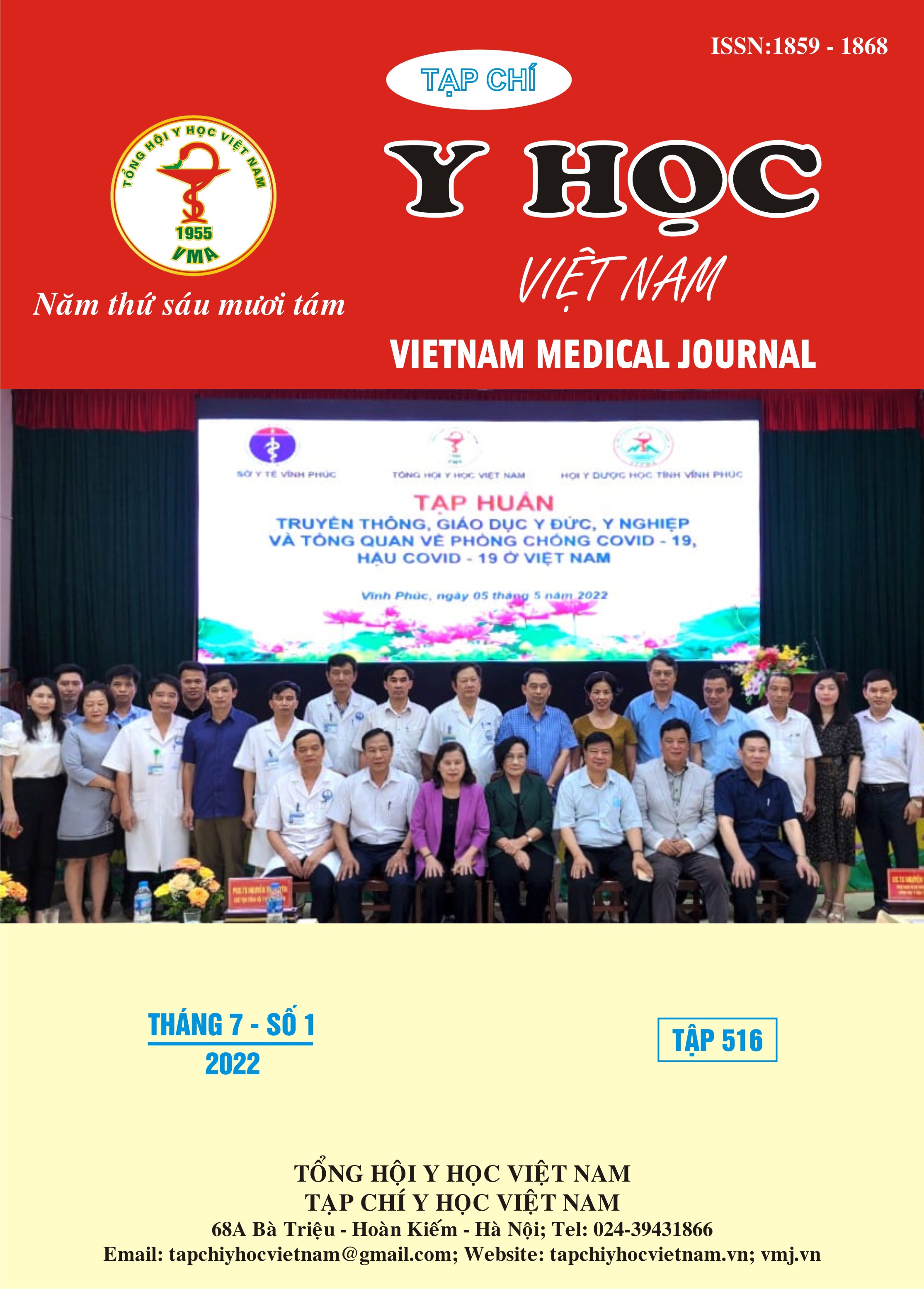MICROCYTIC HYPOCHROMIC ANEMIA IN FRESHMEN AT CAN THO UNIVERSITY OF MEDICINE AND PHARMACY IN 2021
Main Article Content
Abstract
Background: Hypochromic microcytic anemia (HMA) is featured by small red blood cells paler than normal, early detection can help with treatment, appropriate prevention and intervention measures. Objectives: To determine the rate of HMA in freshmen of Can Tho University of Medicine and Pharmacy (CTUMP) in 2021 by the technique of total peripheral blood cell analysis. Materials and methods: A cross-sectional descriptive study on 1701 freshmen at CTUMP. Student’s blood samples was conducted total analysis of peripheral blood cells at the Laboratory Department, CTUMP Hospital. The rate is calculated as the number of HMA students to the total students. Results: In 1701 samples, the rate of HMA students is 13%. In which, the rate of group <20 years is high (65.3%) (p=0.113), female (65.8%) twice as high as male (34.2%) (p=0.018), class 47 is very high (83.1%) compared to class 35 (16.9%) (p=0.182). Kinh accounted for the highest rate (85.8%) (p=0.184), most of them from other provinces of Can Tho (88.1%) (p=0.212). Most of the indexes had changes compared to normal, 60.3% were abnormal in MCV and 100% were abnormal in MCH. Conclusions: The rate of HMA is low, but it is necessary to carry out other specialized tests, there by taking intervention, prevention and early treatment measures.
Article Details
Keywords
Hypochromic microcytic anemia, freshmen, CTUMP
References
2. Abdullah W.M, et al (2021), Diagnosis and Differentiation of Hypochromic Microcytic Anemia among Elementary School Children in Ranya District, Journal of Advanced Laboratory Research in Biology, 12(1), pp. 1-9.
3. Trần Quỳnh Duyên (2018), Nghiên cứu nguyên nhân và đặc điểm cận lâm sàng hồng cầu nhỏ nhược sắc tại bệnh viện Trường Đại học Y Dược Cần Thơ năm 2017-2018, Luận văn bác sĩ đa khoa, Trường Đại học Y Dược Cần Thơ.
4. Hanan A.F., et al (2014), Effect of Microcytic Hypochromic Anemia and Parasitic Infestations on Stature in Adolescents, The Egyptian Journal of Hospital Medicine, 55, pp. 175-183.
5. Shiang Y.W., et al (2020), Microcytic to hypochromic ratio as a discriminant index of thalassaemia trait in subjects with hypochromic anaemia, Malays J Pathol, 42(2), pp. 195-201.
6. Seyed M.B.H.S, et al (2019), Alpha‐globin gene mutation spectrum in patients with microcytic hypochromic anemia from Mazandaran Province, Iran, J Clin Lab Anal, 34.
7. Vaikam H.S., et al (2006), Genotyping of alpha-thalassemia in microcytic hypochromic anemia patients from North India, J Appl Genet, 47(4), pp. 391-395.
8. WHO (2011), Haemoglobin concentrations for the diagnosis of anaemia and assessment of severity, WHO/NMH/NHD/MNM/11.1.
9. Zeynep K., et al (2015), Evaluation of Alpha-Thalassemia Mutations in Cases with Hypochromic Microcytic Anemia: The İstanbul Perspective, Turk J Hematol, 32, pp. 344-350.


